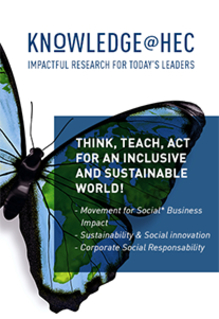The success of the Second Life game
In 2004, Ailin Graef’s avatar, Anshe Chung, started selling custom animations in the popular virtual world Second Life. She used those profits to buy and develop virtual land and then rent out properties to other users, then converted the virtual currency to “real-life” cash, eventually becoming the virtual world’s first real-life millionaire.
In virtual worlds such as Second Life, you get married, go to work, travel, and use virtual currency to buy anything from new clothes to a yacht. And as Ailin/Anshe showed, you can use it to make profit.
Big plans for collaborations online
In a decade or less, virtual worlds may be going mainstream. Last year, Meta (formerly Facebook) announced their serious intention to develop the ‘metaverse’ by recruiting 10,000 virtual world developers from across the European Union. The company is experimenting with a virtual reality meetings app called Workplace, and a social space called Horizons, both of which use their virtual avatar systems.
Supporters of virtual worlds say such platforms have the potential to transform the global collaboration landscape by enabling real-time, media-rich interactions at a significantly lower cost than other means. In the early-2000s, major firms including IBM, Cisco, and Accenture experimented with using virtual worlds for a range of activities, from global meetings, seminars, and training to recruitment drives and even social events. Yet 9 in 10 of these experiments failed and more generally, the use of virtual worlds remains limited.
So, what is holding companies back from engaging with virtual worlds?
Barriers to trust-building in virtual worlds
Research conducted by other groups suggests that employee reluctance has held back the use of virtual worlds at work. It seems that this reluctance to use such emerging platforms may stem from user uncertainties about what they should do, how they need to behave, and what they should expect from the virtual world. In short, users struggle to trust the platform and the process of using it. And without trust, collaboration is impossible.
Uncertainty reduction theory tells us that when individuals encounter new situations, their primary focus is on reducing the associated uncertainties. In virtual worlds, there are multiple uncertainties surrounding identity, authentication, and security, because users interact through computer-generated personas or avatars that can be anonymous or conceal information.
Companies keen to use virtual worlds as a workspace or commerce platform need to understand the barriers within their organization, to foster trust by incorporating greater social presence.
A positive thing about virtual worlds is that they can unite people from diverse backgrounds, but this inevitably creates the potential for conflict. Resolving conflict – and the uncertainties it causes – is challenging and mediating these online can be difficult.
The other challenge is that virtual worlds were designed as recreational gaming environments, where uncertainty was not much of a concern. We must remember that virtual worlds were not purpose-built for organizational tasks, and this may shape some peoples’ attitudes towards them.
From e-commerce emojis to emotions online
We set out to enrich an existing theory of online trust-building (the online institutional trust model by McKnight et al., 2002) incorporating the novel element of socialness in virtual worlds, the degree of its presence.
The introduction of virtual worlds marked a significant difference from websites and traditional e-commerce. Virtual worlds are richer and confer a sense of shared space. They offer users the ability to be ‘socially present’ and display their behaviors, facial expressions, and emotions through their avatars, in addition to verbal and textual communication.
As our research shows, this so-called social presence is of vital importance to trust in and use virtual worlds. Imagine you step into a virtual world and consider buying a software product. Because you are immersed in that platform, you are not only influenced by the products you are shown, but also by the people who appear around you. Can they be trusted?
Extending the online trust model
We thought that the increased social presence available in virtual worlds could help build user trust, so we have incorporated this element into our online trust model.
The original online trust model shows that trust-building came from two elements:
• situational normality (the belief that the online interactional environment is normal and favorable for successful dealings with other users),
• structural assurance (the presence of protective structures such as guarantees, regulations, safety nets, promises, and operational procedures).
We found that in virtual worlds, higher levels of social presence actually contribute to greater situational normality. Hence, the higher the social presence, the greater the user trust and therefore the likelihood that people will use the platform.
In virtual worlds, the higher the social presence, the greater the user trust and therefore the likelihood that people will use the platform.
Eighty-five percent of the people we surveyed were positive about using virtual worlds as workspace collaboration tools. One remarked: “Virtual worlds bring many new possibilities for collaboration, especially for workshops and staff education, conferences, and seminars. For large companies with many overseas branches, it eventually will become a unique platform for communication between colleagues who work in distant places... You can make presentations, organize meetings, use the audio-visual possibilities of the virtual worlds, and bring together teams from New York, London, and Buenos Aires, without losing time for extensive meetings.”
Conversely, we found that higher levels of social presence reduce the link between structural assurance and user trust, as social presence acts as a substitute for structural assurance.
Growing social presence and building trustworthy structures
In support of the power of social presence to build trust, one of our interviewees said: “The notion of others being socially present adds immeasurably to building trust in a relationship. Avatars that are humanoid perhaps help some individuals feel the virtual world is more normal. The presence of avatars definitely increases sense of normalcy. It may increase sense of trustworthiness for some individuals that base trust upon appearance.”
Another interviewee commented: “Virtual worlds help me develop a real relationship with a person. In virtual worlds, we have more opportunities to express ourselves than in other forms of nonphysical communication, through speaking and typed chat. It is also a safe environment, physically and emotionally, especially in worlds where we can choose to be anonymous. All these factors lead to personal safety which adds to build trust in a relationship.”
Our research shows that companies interested in utilizing virtual worlds should seek to build social presence to increase user trust and encourage the use of the platform. This builds upon research we describe in a 2012 paper, which found that cognitive absorbance – the state of users getting deeply involved in a scenario, perhaps through game-playing activities – is another way of increasing user trust in a virtual world and their intent to use it for workplace collaboration.
Finally, our work also demonstrates the need to look carefully at how they can offer more reassurance in terms of the platform’s structure. This could come in the form of clear regulations and assurances on data protection.










